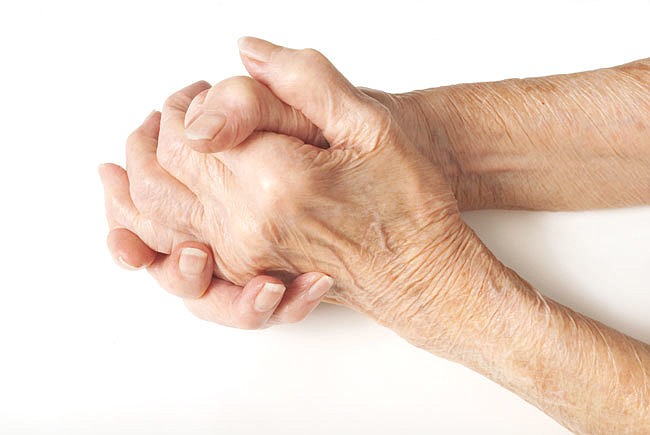- May 9, 2025
-
-
Loading

Loading

Forget everything you’ve ever heard about successful networking. I have discovered the most ingenious way to meet people — develop basal joint thumb arthritis, wear hand splints to immobilize your thumbs, and voila, the most interesting people stop you at street corners, in restaurants, at the veterinarian’s office, you name it. It’s a constant stream of new acquaintances, and here’s the thing: they all have a story to tell and, for the most part, they’re sympathetic to your story. That’s because their thumbs hurt, too — sometimes chronically and other times when performing a certain task like using scissors or picking something up in a pinching motion. And no one has a surefire solution for the pain to share.
And they are mostly women.
At the risk of violating Title IX or some other ridiculous government regulation, women bear the brunt of this painful condition. According to the June 2017 issue of Arthritis & Rheumatology, osteoarthritis in the hand is common. More than 2,200 adults were studied and found that the overall risk of developing hand OA is 40%. And here’s the rub, it occurs in about 50% of women versus 25% of men. I was outraged. I tracked down my favorite orthopedic surgeon for information.
Dr. David Klein of Kennedy White was not only patient but also encyclopedic in his explanation. “Our thumbs are very important because of the way that they help us interact with our world, Kristine,” he began. “They are not truly fingers but they are certainly digits (the differences are that a finger has three bones (phalanges) while a thumb has two; also, each finger has two flexor tendons where the thumb has one).”
He quickly got to the heart of why this condition is so painful. “The thumb is likely our most frequently used digit because it is involved as the partner to each of the other digits during grasp and manipulation of objects. Thumbs are called ‘opposable thumbs’ because they are placed opposite to the fingers during grasping and manipulation of objects — when you pick up and hold something, it is usually between your thumb and your finger.”
And then he hit the core issue by citing the value of hand use. “Many tables ... will place the thumb function at 40% of the function of the whole hand.” And here’s a little known fact: when people frequently say that “the thumb is what makes us different from the apes,” this is not necessarily true, for there are a few species of primates that do have opposable thumbs.
Dr. Klein outlined the various kinds of conditions that cause thumb pain. “There is stenosing flexor tenosynovitis, otherwise known as ‘trigger thumb,’ also Dequervain’s tenosynovitis, which is common during pregnancy and nursing, as well as from various injuries or activities. Tears or stretches in the ulnar collateral ligament at the metacarpophalangeal joint, which can be known as ‘gamekeeper’s thumb’ or ‘skier’s thumb,’ and the subject of your questions (and condition): basal joint arthritis, also known as carpometacarpal arthritis. Of these, the last one, basal joint arthritis, a type of osteoarthritis, is the most insidious and perhaps the most common.”
My first reaction is to blame my three-legged dog — now at the Rainbow Bridge — whose canine arthritis was so debilitating in the final months of his life that he had to be picked up several times a day with a splayed hand position. Wrong, says Dr. Klein, letting poor Puppet off the hook. “Many people do think that basal joint arthritis is just activity-related from overuse,” he explains. “It is in fact a genetic pattern that is passed through families, frequently along the mother’s side. It tends to be more symptomatic during activity, but it occurs in people of all activity levels, usually beginning to be symptomatic in one’s 40s or 50s, and more common in women than in men.”
Why?
“I don’t know the reason that it is more common in women,” he replies. “But I do know that texting ... cannot be blamed for one’s thumb arthritis!”
Whew.
Dr. Klein went on to say that while many types of osteoarthritis that people are familiar with — hip and knee being most common — progress in a continually worsening fashion as the years pass, basal joint arthritis is unique in that it tends to go through a several-year period of significant pain and disability, after which the symptoms just quiet down even though the visible deformity and the X-rays continue to worsen. Additionally, and this is really interesting, the amount of pain that someone has with their thumb does not always correlate with how much deformity they have nor with how severe the changes are on their X-rays. “Because of this,” he continues, “the main goal of treatment is to reduce the symptoms during the time that the pain from the arthritis is the most troublesome. Currently, we do not have a treatment that will stop basal joint arthritis or other forms of osteoarthritis from progressing, so all of the treatment is ‘symptomatic treatment.’”